Mapped: Canada’s wildfires are impacting air quality in these US communities
Dangerous wildfire smoke has tinged skies over major cities, including New York and Chicago
Smoke from wildfires still raging in Canada is degrading air quality across the northern U.S., turning skies a murky orange hue and forcing sensitive groups indoors.
In New York, the smoke could be seen in the upper atmosphere from satellites, and an air quality alert was in effect until 11 p.m. Thursday evening. Poor air quality was also in store for Chicagoans, who were told to reduce time spent outdoors.
Government maps showed the worst levels of particle pollution around the Windy City and Detroit, with the latter under an advisory through noon on Friday. In Chicago, one area saw an Air Quality Index at a level of 157, which is deemed “unhealthy.” The particle pollution can affect the eyes, throat, lungs, and heart. Sometimes, it can even lead to premature death.
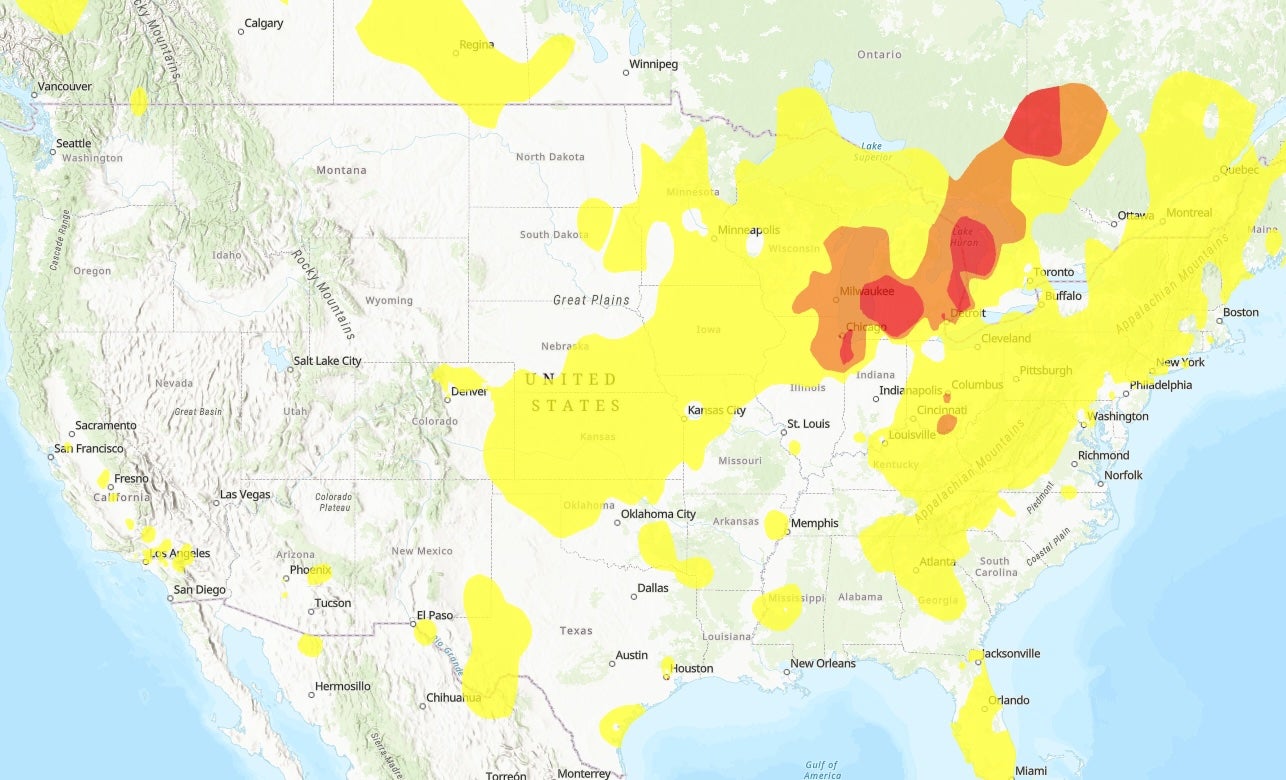
“It’s probably a good idea to limit time outside,” Kevin Doom, a meteorologist with the National Weather Service, said, according to The Chicago Sun-Times. “Doing a lot of heavy breathing is probably not ideal on a day like today.”
Forecasters said there’s a chance an alert there would be extended into Friday, as temperatures across much of the eastern U.S. continue to spike ahead of a rainy weekend.
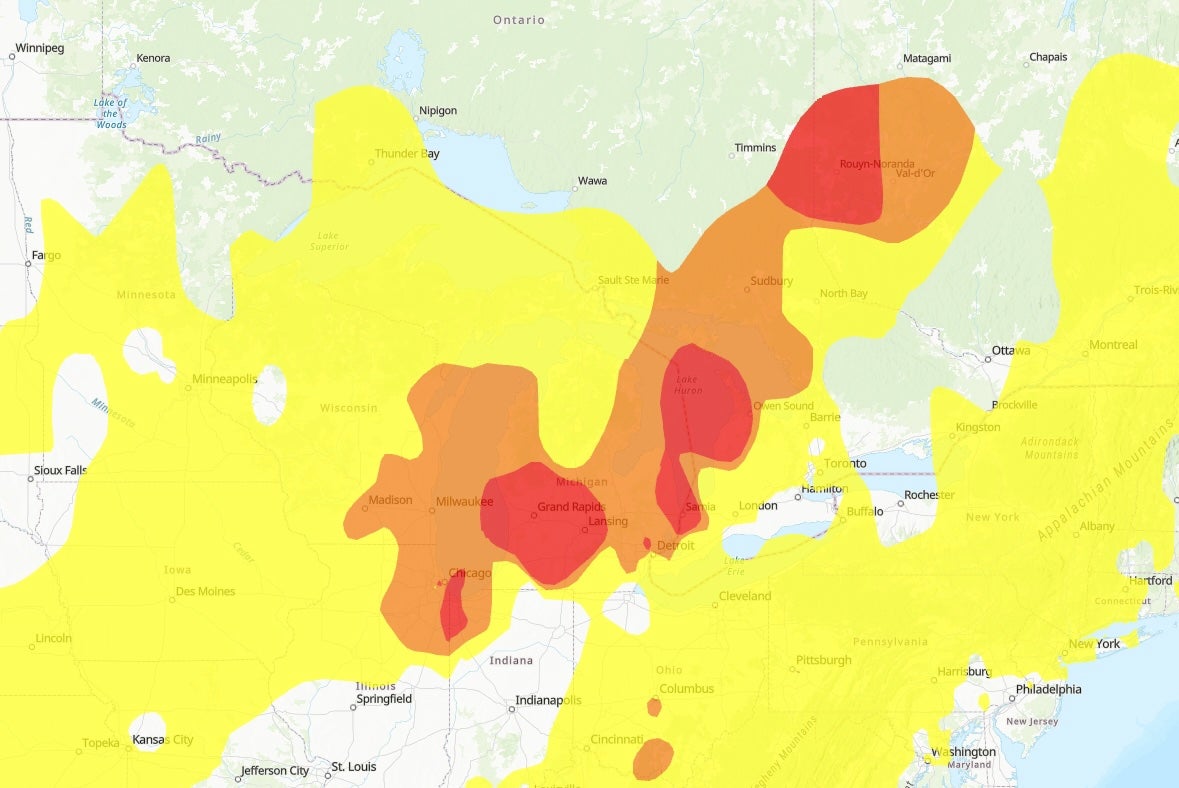
Some of the haze also has to do with ozone pollution, which is linked to that heat.
“On hot and sunny days, especially in urban areas, heat and sunlight react chemically with pollutants in the air to form ground-level ozone, which can be very irritating to people with respiratory problems,” WNBC’s Lauren Maroney warned.
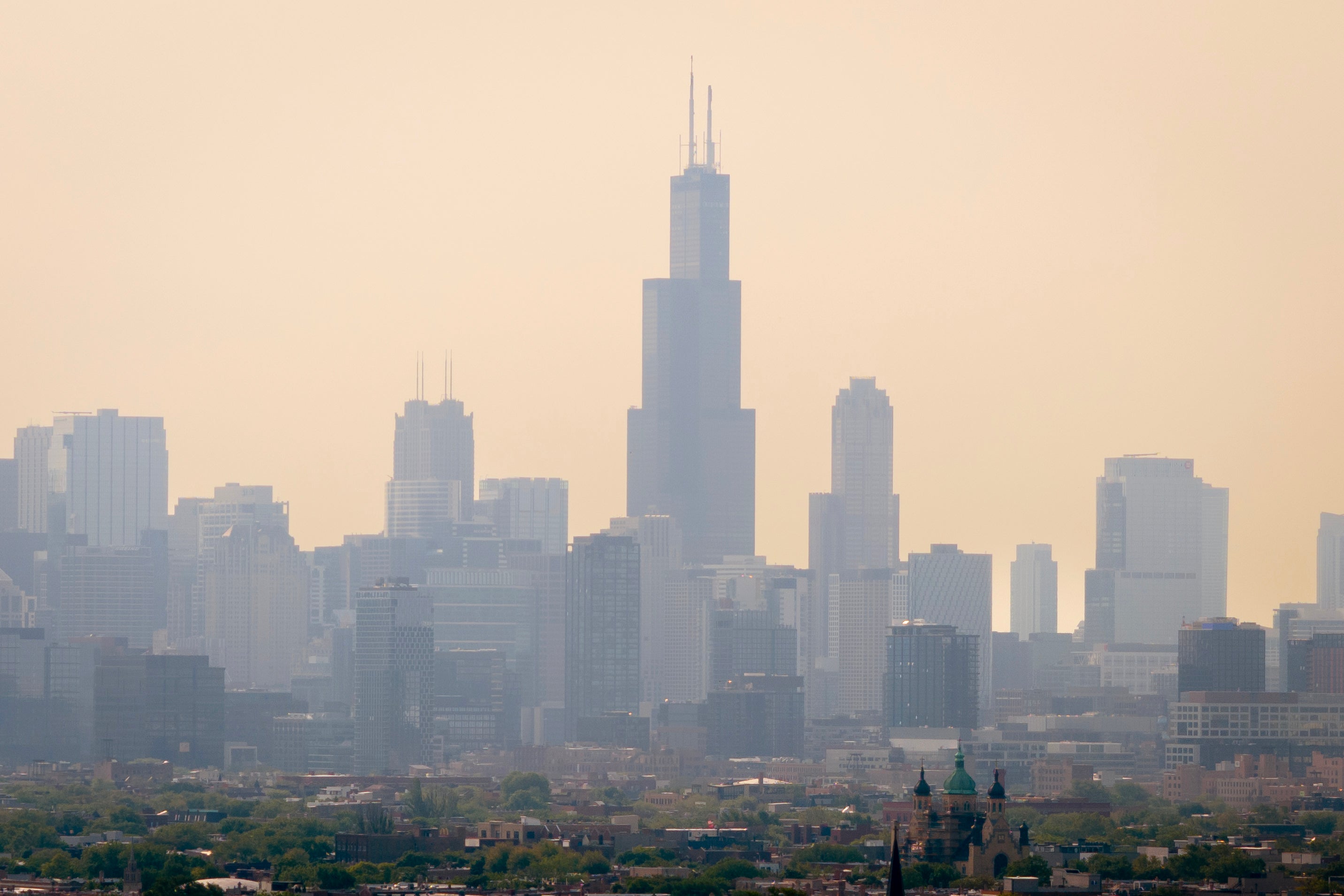
In the U.S., wildfires have burned in Minnesota, Florida, and the West. There have been more than 1.1 million acres torched to date across the country, according to the National Interagency Fire Center.
There are more than 200 active wildfires raging in Canada, and more than 6.4 million acres have burned since the start of the year. Two new blazes were reported on Thursday, according to the Canadian Interagency Forest Fire Centre.
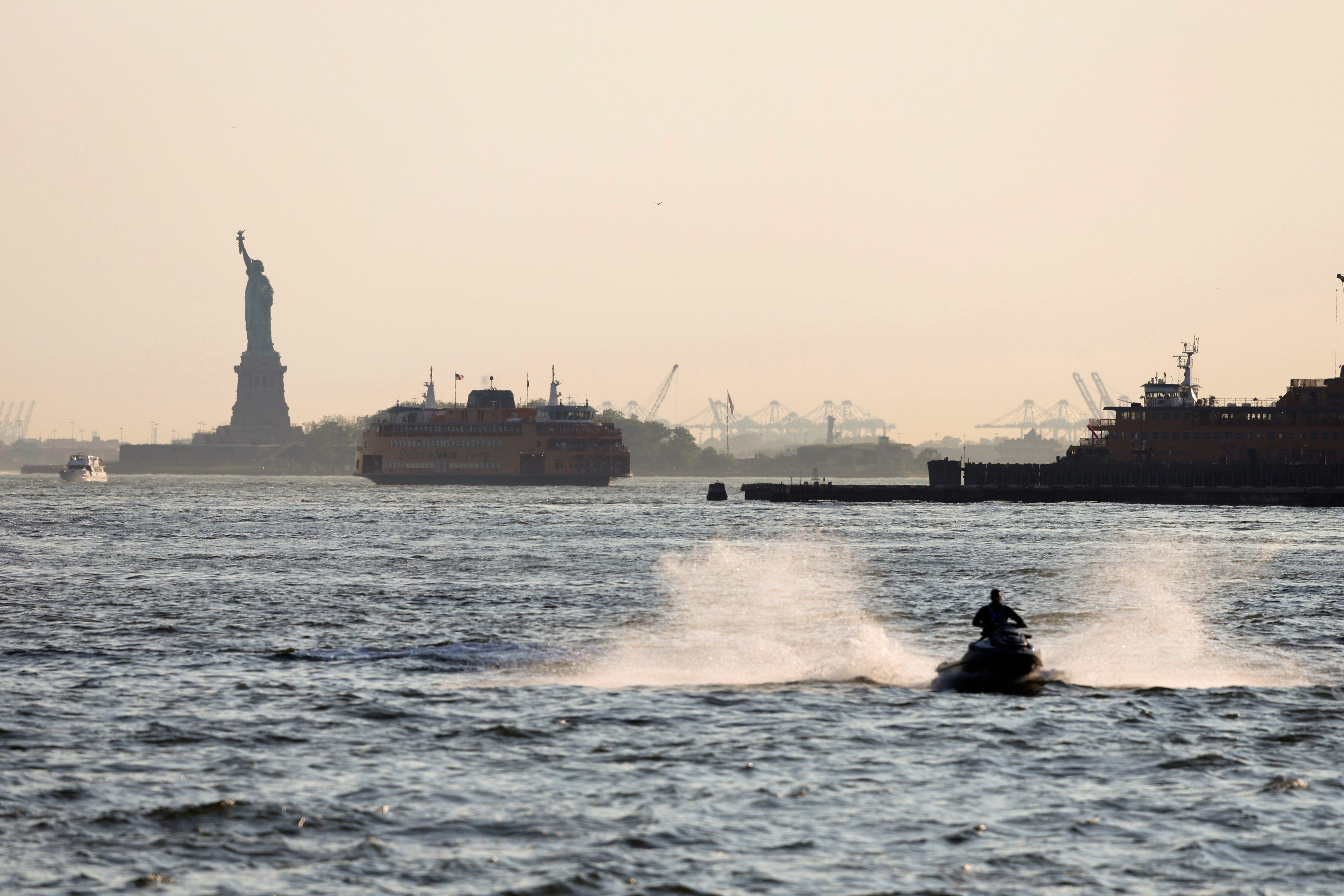
The deadly fires have resulted in the deaths of two people and forced tens of thousands of people to flee. Officials in Mantiboa and Saskatchewan have declared a state of emergency. Manitoba skies have turned a ruby red color.
"I've never seen anything like it," Saskatchewan Premier Scott Moe said, according to CBC News.
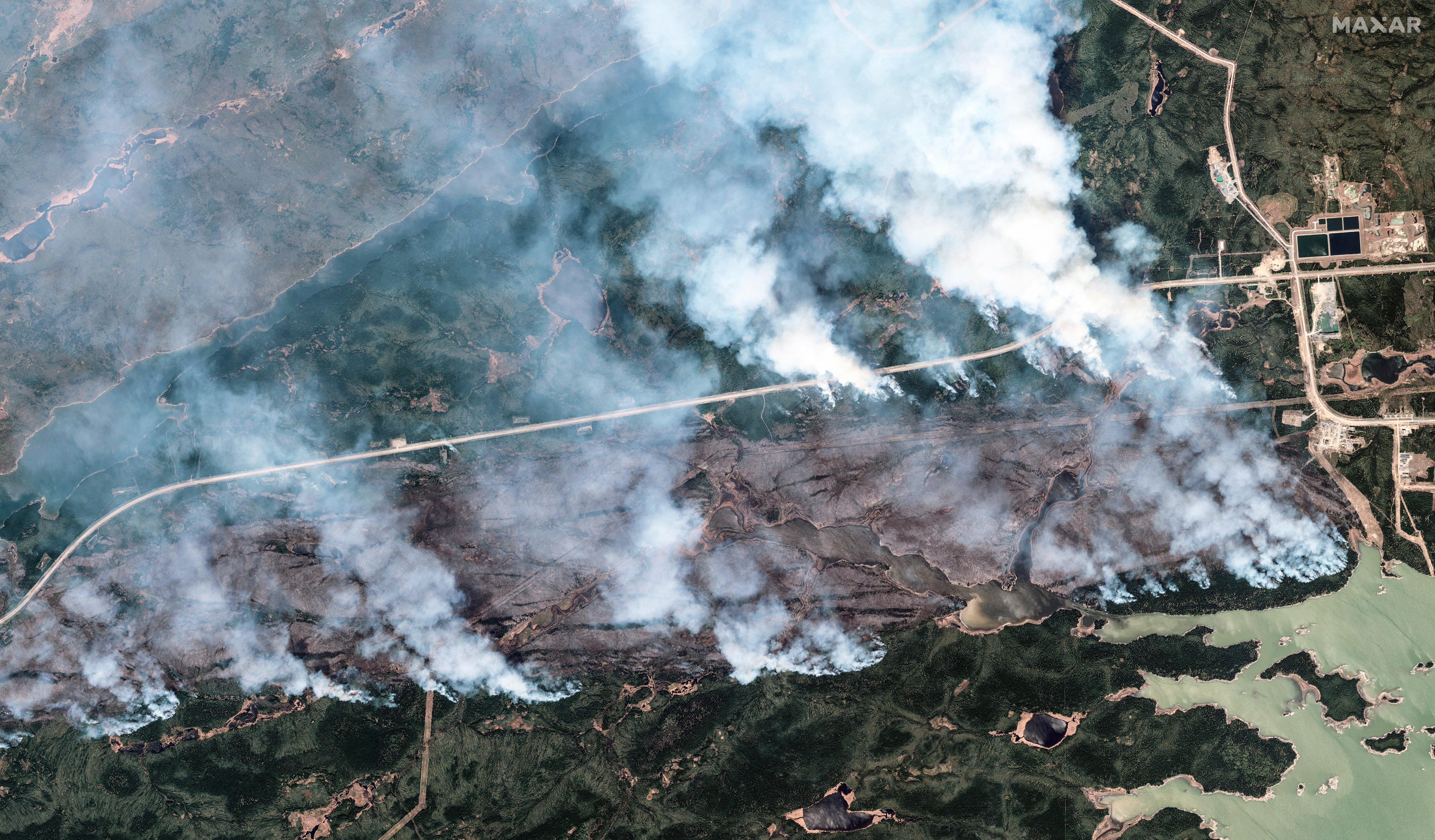
Climate change is helping to stoke the flames of wildfires around the world each year, bringing even hotter and drier conditions. As smoke continues to impact millions in the northern U.S., it is heading South. AccuWeather said it might collide with a 2,000-mile-wide plume of Saharan dust later this week.
“This appears to be the largest Saharan dust plume to reach America so far this year,” Lead Hurricane Expert Alex Dasilva said in a statement.



Join our commenting forum
Join thought-provoking conversations, follow other Independent readers and see their replies
Comments